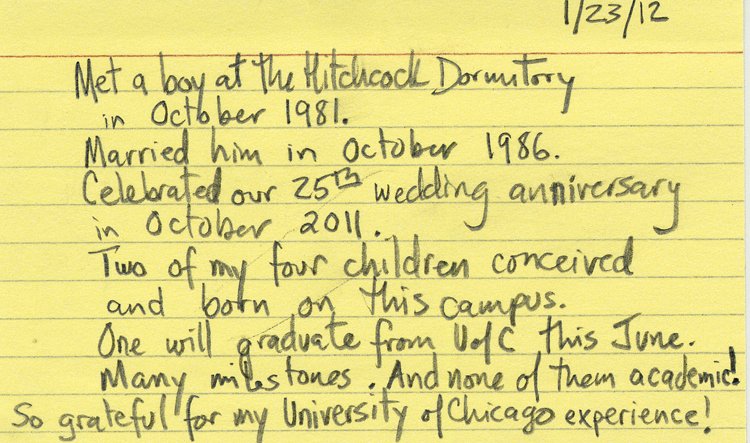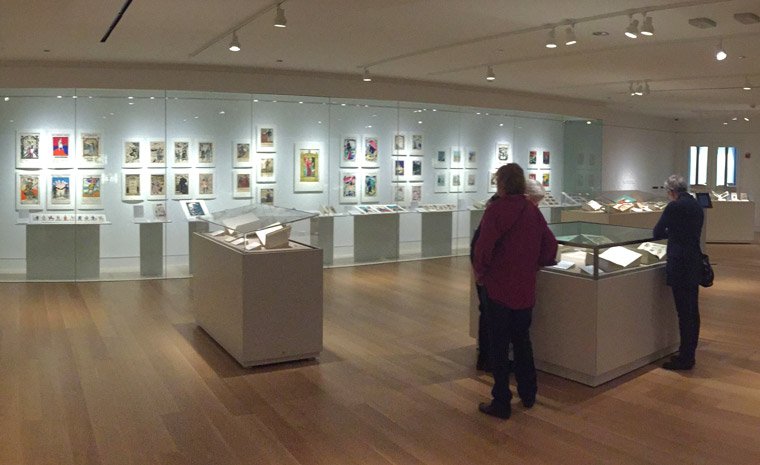Tracking student life at the University of Chicago can be a daunting challenge. Today the University supports more than 300 Registered Student Organizations (RSOs). These groups provide a focus for an amazing range of student activities – community service, political advocacy, sports, fine arts, Greek life, cultural and ethnic associations, and spirituality, among others. Beyond the University RSOs, student life includes residence hall and apartment life, and extends to experiences across the neighborhood and city, whether in coffee shops and restaurants, galleries, volunteer agencies, political campaigns, or beyond.
Understanding the history of student life is equally complex. Since the University of Chicago opened in 1892, students have organized an amazing array of social, academic, cultural, residential, athletic, literary, and political groups. Student activities have run the gamut: publishing magazines, yearbooks, and newsletters; staging theatrical performances and art exhibits; broadcasting radio shows; putting on formal dances; showcasing documentary and classic films, and raising funds for community causes. More than a few of these interests can be traced back to the mid-nineteenth century, when student organizations flourished on the campus of the first University of Chicago founded in 1857.
Collecting and preserving this diverse and fascinating student history is part of the mission of the University Archives. We Are Chicago displays some of the most fascinating documents, photographs, and artifacts from the archival collections. Some were donations presented by individual alumni or their families. Others were responses to appeals in the alumni magazine or gifts of student organizations, fraternities, and clubs. Taken together, these unique historical items show the range of the archival collections, but they also suggest the many gaps waiting to be filled. The University Archives welcomes donations from alumni, students, and community neighbors who have historical materials on student life that can be preserved and made available to the students and researchers of the future.

1932
Framed Art Collection
Though we know the map was created by the University of Chicago Alumnae Club in 1932 nofurther details are know about the printing and distribution of this cartoon map. It is evident that
it was produced before the launch of the Century of Progress World’s Fair that came to Chicago
in 1933-1934. The map highlights elements of campus including academic and dormitory
buildings, athletic fields, the old Ferris wheel from the 1893 World’s Fair, and more.

ca. 1918-1920
John Manfred Rise. Papers
John Manfred Rise (1898-1970) was a student in the college from 1918 to 1920. His letters paint a vivid picture of student life at the University of Chicago during the late ‘teens. He comments on campus food, the entertainment available in Hyde Park and Chicago, class work and lectures, and late night talks with friends where such questions as whether or not all women were “inveterate liars” were discussed. From these papers, one gleans an idea not only of early student life at the University of Chicago, but also a sense of the character of the student experience.

1899-1900
Hedwig L. Loeb. Papers
Hedwig Loeb (1879-1981) received her A.B. in 1902 in history and political science. She worked at Hull House and the American Red Cross just out of college. Her album illustrates campus life, dorm rooms, and areas around Chicago. The blue images are referred to as cyanotype, a photographic process that uses Prussian blue for the image to produce a positive print from a negative.

1894, General Archival File and 1911, General Archival File
Committee conversations about a color for the university continued. Green and red were suggested at one time (a personal favorite of athletics director Amos A. Stagg) as did the color scarlet. Scarlet, as was written in an editorial of the student paper The Weekly, “is the color of the gay and beautiful, that shows the richest on the field, best on women’s dress or in flags and ribbons or in the suits of the players, the color that is most brilliant in decoration.” Others saw the color scarlet as a shade considered a warm color that had a reputation for inciting anger. In spring 1894, after correspondence with Harvard, Illinois, Wisconsin and others to avoid conflict with their colors, recommendations were made to adopt the color maroon. Debates on campus and meetings of dissatisfied students began, some voting for scarlet others maroon. By the summer 1894 the color maroon had officially been adopted and students had begun to be seen wearing the new shade.
This ribbon was the piece of fabric used by the administrative and student committees when voting for the new university color.

Archival Textile Collection; University of Chicago Burton-Judson Courts. Records
The Archival Textile Collection holdings include University of Chicago related T-shirts donated by students, faculty and alumni from their time at the university. Often ubiquitous on college campuses, T-shirts can collectively represent students’ school spirit, residential life, campus activities, and sense of humor.

1925
Archival Textile Collection
There has been a long tradition of exhibition baseball games between the Chicago Maroons and the Japanese universities of Waseda and Keio between 1910 and 1933. These games were revived in 2008. The visits of the Japanese players to Chicago and the Chicago teams’ tours of Japan were an eagerly anticipated event of the baseball season. For the 1925 game, Wasada University presented the University of Chicago with a silk kimono with hand painted images of a baseball, glove, bat and images of Japan.











